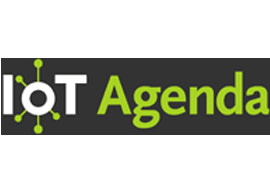
So you’ve decided to delve into the Internet of Things and are interested in its applications for your business—but don’t know where to start. This is understandable. IoT is a rapidly growing and complex field, one that offers a lot of promise for innovation, but also serious implications concerning privacy and security.
Let's examine the four core concepts of smart connectivity: scale, security and maintenance, analytics and visibility, and systems intelligence.
This post will help you approach IoT strategically, by examining the four core concepts of smart connectivity: scale, security and maintenance, analytics and visibility, and systems intelligence. Below you’ll find an exploration of the four essential concepts when building an IoT product and some key questions to ask yourself when defining your product roadmap.
1. Scale
Be intentional about the product and ecosystem scale. IoT applies to many different physical scales and devices, from an individual’s health tracking up to an entire global supply chain. Evaluate your customer base and market opportunities to decide what scale is most appropriate for your business.
You may even consider how to start small and scale up. For example, Apple is using its watch as a personal health tracking device, while slowly building its capabilities into a legitimate consumer medical device, all while trying to edge their way into a much larger healthcare system.
Evaluate your customer base and market opportunities to decide what scale is most appropriate for your business.
Ask yourself:
• How does scale affect the type of product your company is bringing to market?
• How does a device of one speak to or integrate with a system of many?
• Can something at industrial scale provide value to individuals?
2. Security and Maintenance
Be mindful of security—and know you can always outsource. Increased connectivity also means increased risk. As the number of connected devices balloons, it will become imperative to have a long-term strategy around maintaining security.
“Part of the IoT problem is that companies with little experience of producing connected devices are now keen to jump on the bandwagon. In many cases they're probably not thinking about cybersecurity as something they need to consider as part of the design process," writes Danny Palmer in ZDNet. If your company is new to IoT or big data, there are many resources available to help you approach this new technology safely. The rise of middlemen companies like Cloudflare have made it their mission to provide security for the Internet of Things as well as the Internet as a whole.
As the number of connected devices balloons, it will become imperative to have a long-term strategy around maintaining security.
Ask yourself:
• Before you hire a cyber security team, consider how will you manage this over the lifecycle of your products?
• Who is likely to keep their devices secure?
3. Analytics and Visibility
Leverage data to design better products and experiences. IoT opens up the ability to see beyond the surface—the larger connections between, people, behavior, and technology. For both consumers and companies, this is the promised land—insights that are meaningful, not just a dashboard with graphs and stats without context.
The future value in the IoT space will be created by companies that think about novel ways to connect data and behaviors and turn them into actionable insights. Take, as an example, the work EPAM Continuum did with Fastweb, a major Italian internet provider, on their FASTGate modem. The project is a good example of leveraging data to create improved user experiences. The project’s UI’s features “allow for real-time intervention by users while giving direct reassuring feedback, which greatly minimizes consumer frustration.”
Ask yourself:
• How might you leverage insights to improve your products and benefit your consumers?
• Which are the key analytics needed for your frontline employees? For your customers?
4. System Intelligence
Harness the power of system intelligence—but do so carefully. With increased data points, your connected ecosystem will be able to leverage collected information to help build system intelligence to automate or augment a user’s task.
Even if you’re not prepared to implement machine learning quite yet, it’s important to think about how your product will evolve while actively thinking about autonomy.
This is where the future of technology is headed, but augmentation and automation are challenging to perfect and users are not very forgiving. The minute a product makes a mistake, the whole system of trust erodes. Even if you’re not prepared to implement machine learning quite yet, it’s important to think about how your product will evolve while actively thinking about autonomy.
Ask yourself:
• What types of tasks make sense to automate?
• What is the right amount automation or augmentation to make things easier while still leaving the user in control?
The Next Step
Congratulations: You’ve taken your first steps into the domain of the Internet of Things. In a future post, we will consider the differences between IoT automation and augmentation—quite a distance to travel—and how these differences will affect the people, and the connected systems, of the future. Catch you in the cloud!




